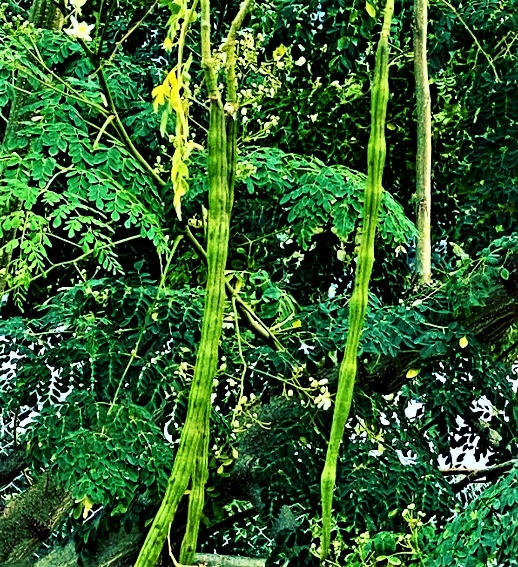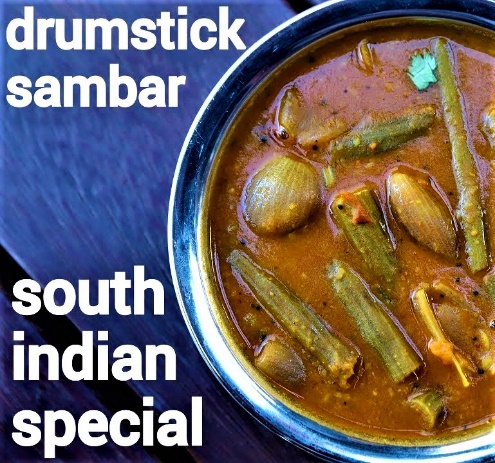Drumstick tree, locally known in India as ‘munga’, ‘sahajan’, ‘swejan,’ is a wonder tree with its nutritious drumsticks eaten as a vegetable. Moringa oleifera, is a fast growing, drought resistant tree. The pods are no less than superfood. It has vitamin C seven times than that of an orange, vitamin A four times than that of a carrot, calcium four times than that of milk, potassium three times than that of a banana, and protein three times than that of curd. According to ayurveda traditions, eating different parts of the drumstick tree can cure over 300 different diseases.
Yet, it is still considered a poor man’s vegetable and no one cultivates it commercially.
Munga commonly known in various names such as Horseradish tree, Moringa, Drumstick tree, Ben Oil tree, and Benzoil tree, Moringa oleifera is the only genus in the Moringaceae family. It is deciduous, fast growing, and resistant to drought reaching a height of up to 12 metres and trunk diameter of up to 45 centiimetres upon maturity. It has an open crown of drooping branches and tri-pinatte leaves.
The leaves are yellow-white, fragrant, and thinly veined. The fruit is a three-sided capsule, brown in color, and hanging. The seeds are globular, dark boring and have whitish papery wings. It can be dispersed by wind and water. The roots are shredded and used as a condiment. The leaves are the most nutritious plant part. It is often cooked and consumed as vegetable, or dried and crushed into a powder then added into soups and sauce.
The seed pods are edible when immature but become inedible and bitter as it matures. The seeds can be eaten like peas or roasted. It yields edible oil known as ben oil which is clear and odourless.
The flowers of the munga tree, known in various names such as horseradish tree, moringa, drumstick tree, ben oil tree, and benzoil tree, can be eaten raw or cooked. Munga or drumstick tree, in general, is a diuretic, rubefacient, and laxative. It can be used to increase milk flow and control bacterial infections. It can also be used as treatment for asthma, gout, rheumatism, inflammation, bladder and kidney stones, boils, ulcers, wounds, skin diseases, snake bites etc.
Horseradish tree is also planted as windbreaks and to prevent soil erosion. Propagation is by seed or cuttings. The bark is used for tanning. The wood yields blue dye and used only for light constructions.
Physical Characteristics
It is noted for attracting wildlife. Suitable for: light (sandy), medium (loamy) and heavy (clay) soils and prefers well-drained soil. Suitable pH: mildly acid and neutral soils and can grow in saline soils.
It cannot grow in the shade. It can tolerate drought. The plant can tolerate strong winds but not maritime exposure.




Medicinal Uses
Plants For A Future cannot take any responsibility for any adverse effects from the use of this plant. Always seek advice from a professional before using a plant medicinally.
The horseradish tree is a nutritious, diuretic, laxative herb that is expectorant, increases milk flow, controls bacterial infections and is rubefacient when applied topically [238]. It contains a potent antibiotic [23 ]. Ben oil, obtained from the seeds, has no taste, smell or colour and is exceptionally resistant to oxidation [238 ].
The young leaves are taken internally to increase the milk flow in nursing mothers [238]. The root is used as a vesicant [287]. The alkaloid spirachin (a nerve paralyzer) has been found in the roots [303]. The root juice is used internally in the treatment of asthma, gout, rheumatism, enlarged spleen and liver, bladder and kidney stones, inflammatory conditions [238].
Externally, the root is used to treat boils, ulcers, glandular swellings, infected wounds, skin diseases, dental infections, snake bites and gout [238]. The roots and bark are used for cardiac and circulatory problems, as a tonic and for inflammation [303]. The bark is an appetizer and digestive [303]. The gum is demulcent, diuretic, astringent and abortifacient [303, 307]. It is used in cough syrups and in the treatment of asthma [303]. The bark and gum are used in the treatment of tuberculosis and septicaemia [238].
Flowers and immature fruits are said to be a good rubefacient [287]. A decoction of the flowers is used as a cold remedy [303]. The seeds are effective against skin-infecting bacteria Staphylococcus aureus and Pseudomonas aeruginosa. They contain the potent antibiotic and fungicide terygospermin [303].
Oil of Ben is used for hysteria, scurvy, prostate problems and bladder troubles [303]. A number of compounds with medicinal properties have been isolated. The fruit and leaf contain oxalic acid, the bark moringinine, the stem vanillin, the flower kaempferol and quercetin and the root spirochin and pterygospermin [299]. The seeds contain a glucosinolate that on hydrolysis yields 4-(alpha-L-rhamnosyloxy)-benzylisothiocyanate, an active bactericide and fungicide [299].
Source: Plant For A Future


Leave a Comment: